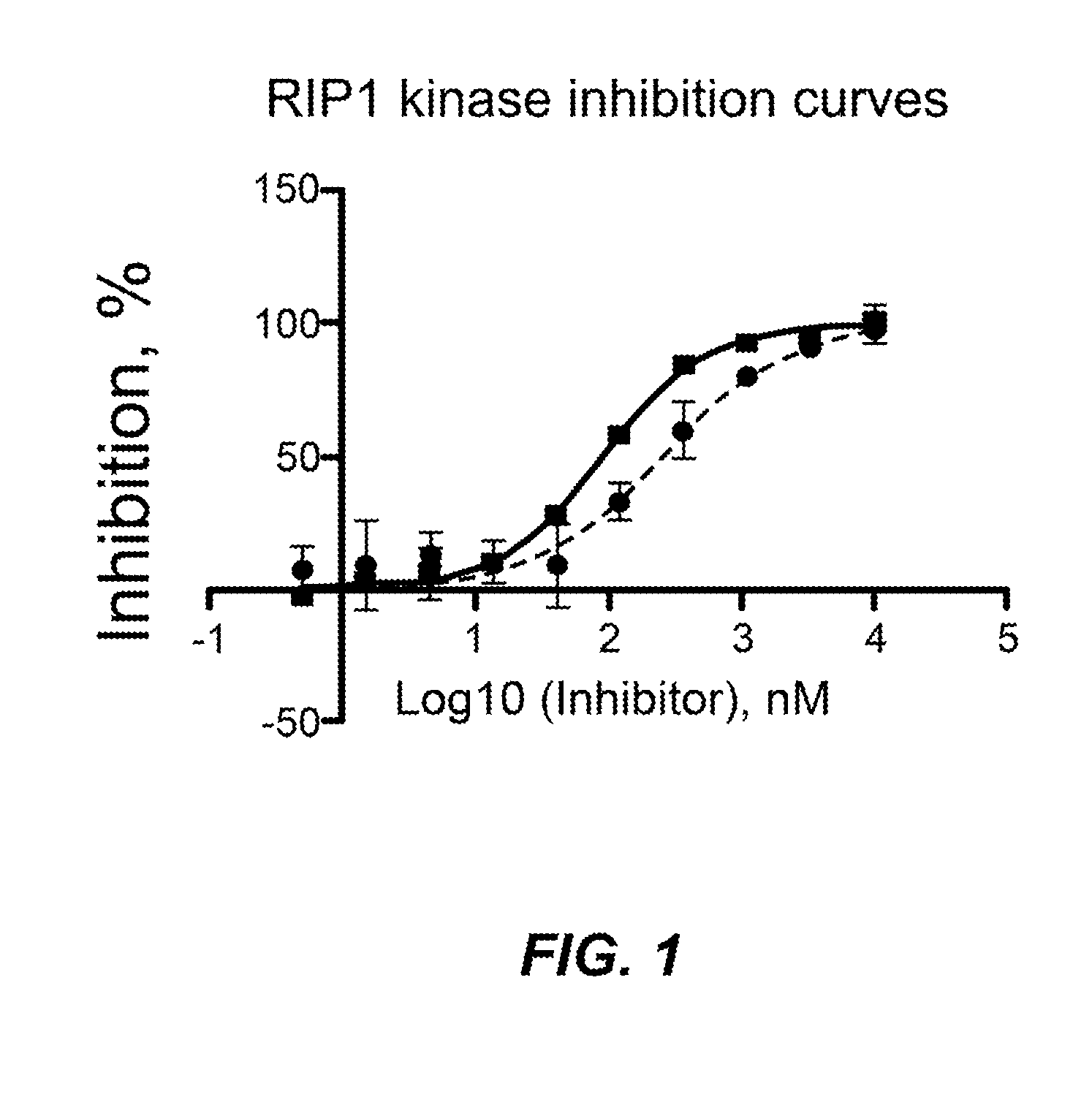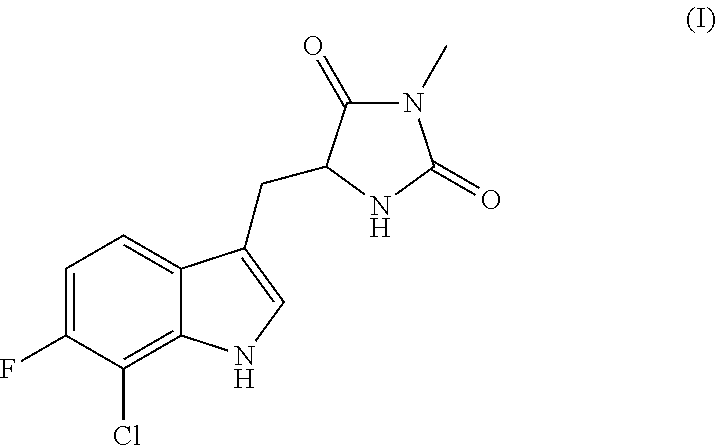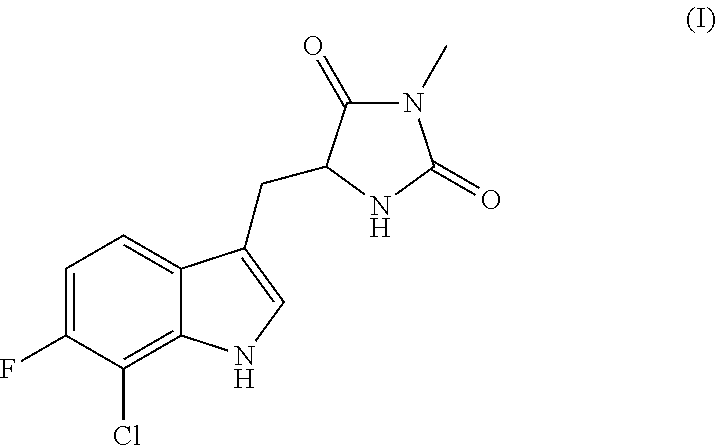Inhibitors of cellular necrosis and related methods
a technology of cellular necrosis and inhibitors, which is applied in the direction of biocide, cardiovascular disorders, drug compositions, etc., can solve the problems that none of the currently available preparation methods are useful for large-scale production of indole and indole-substituted hydantoin compounds
- Summary
- Abstract
- Description
- Claims
- Application Information
AI Technical Summary
Benefits of technology
Problems solved by technology
Method used
Image
Examples
example 1
PREPARATION OF (R)-5-((7-CHLORO-6-FLUORO-1H-INDOL-3-YL)METHYL)-3-METHYLIMIDAZOLIDINE-2,4-DIONE (IA)
[0235]
(R)-3-(2,5-dioxoimidazolidin-4-yl)propanoic acid
[0236]NaOH (12.5 M, 80 mL, 1.0 mol) was added dropwise to a suspension of D-glutamic acid (147 g, 1.0 mol) in water (120 mL) at 10° C. The mixture was stirred at room temperature for 10 minutes, and then NaOCN (71.6 g, 1.1 mol) was added. The reaction was heated to 80° C. for 3 hours. Concentrated HCl (183 mL, 2.2 mol) was added while maintaining a temperature below 20° C. by ice bath. The resulting mixture was refluxed for 3 hours, then cooled to room temperature without stirring for 12 hours until a white solid was deposited. The mixture was filtered and washed with water (100 mL×2) and dried in vacuo to afford the desired product as a white solid (122 g, 71%, 99% ee).
S-ethyl (R)-3-(2,5-dioxoimidazolidin-4-yl)propanethioate
[0237]To a solution of (R)-3-(2,5-dioxoimidazolidin-4-yl)propanoic acid (0.1 mol, 17.2 g) in 200 mL DCM, EDC ...
example 2
Exemplary Preparations of Compound 4
[0241]
[0242]To a solution of compound 3 (0.1 mol, 17.2 g) in 200 mL DCM, EDCI (0.11 mol, 21 g) in the ice bath (0-5° C.), EtSH (0.1 mol, 6.2 g) and the catalyst DMAP (0.008 mol, 0.97 g) were added sequentially. After keeping the temperature for 10 min, the bath was removed and kept stirring at room temperature for 2.5-3 h until TLC detected the reaction was complete (eluting with MeOH). The reaction was then quenched by adding 100 mL 0.5 mol / L HCl solution. The reaction mixture was then filtrated after stirring for 2 min and the filtrate was separated, and the aqueous phase was then extracted twice with 100 mL DCM. A white solid was obtained from the combined organic phases and concentrated in vacuum. The solid and the filter cake was slurried in 200 mL water to remove ethanethiol. The final product was obtained by filtering and drying over the filter cake. (17.5 g, 81%), 1H NMR (500 MHz, dmso-d6) δ 10.63 (s, 1H), 7.94 (s, 1H), 4.09-3.91 (m, 1H), ...
example 3
Preparation of Compound 5
[0244]
[0245]To a solution of thioester compound 4 (10 mmol) in 20 mL THF in ice bath, 10% Pd / C (0.2 g) and Et3SiH (4.1 mL, 30 mmol) was added. The ice bath was removed after 5 min and the reaction was allowed to stir at room temperature for 0.5-1 h until TLC detected the reaction was complete (eluting with DCM:MeOH=10:1). The catalyst was removed by filtration and the filtrate concentrated to provide compound 5.
PUM
| Property | Measurement | Unit |
|---|---|---|
| body weight | aaaaa | aaaaa |
| body weight | aaaaa | aaaaa |
| temperatures | aaaaa | aaaaa |
Abstract
Description
Claims
Application Information
 Login to View More
Login to View More - R&D
- Intellectual Property
- Life Sciences
- Materials
- Tech Scout
- Unparalleled Data Quality
- Higher Quality Content
- 60% Fewer Hallucinations
Browse by: Latest US Patents, China's latest patents, Technical Efficacy Thesaurus, Application Domain, Technology Topic, Popular Technical Reports.
© 2025 PatSnap. All rights reserved.Legal|Privacy policy|Modern Slavery Act Transparency Statement|Sitemap|About US| Contact US: help@patsnap.com



